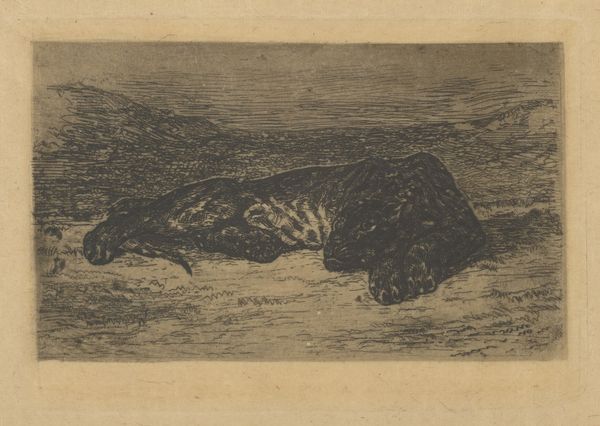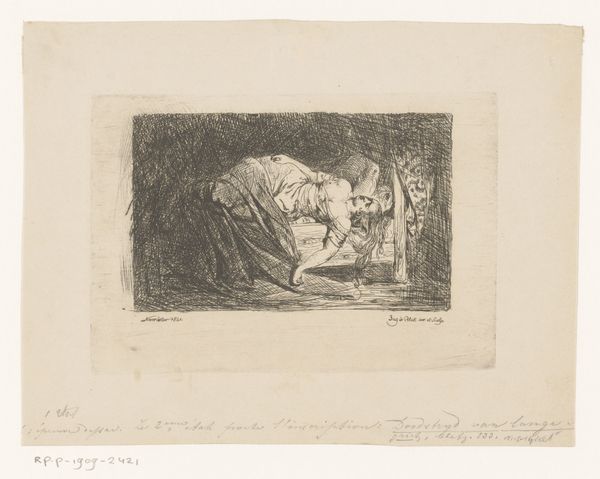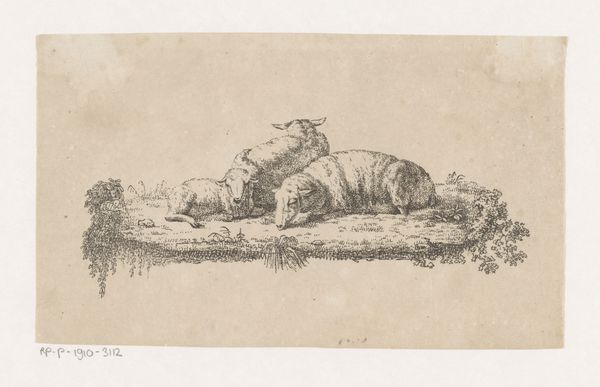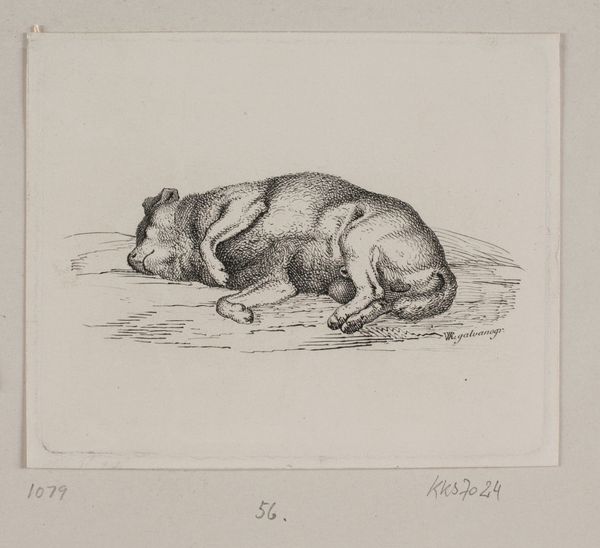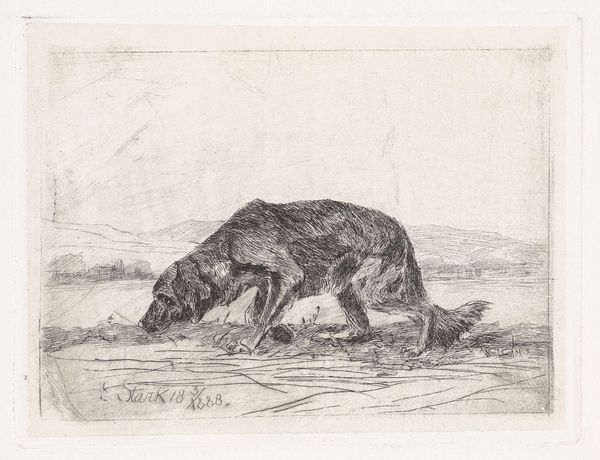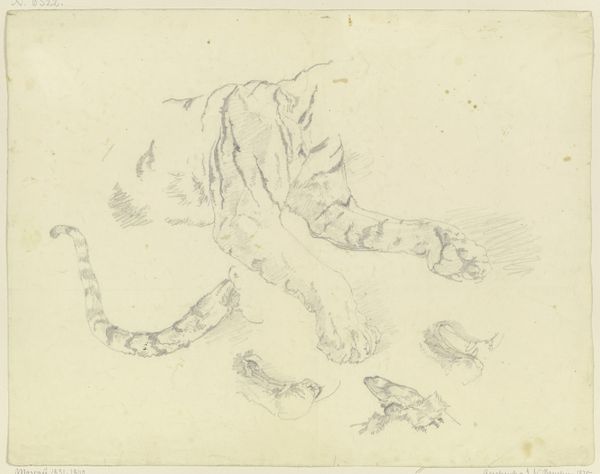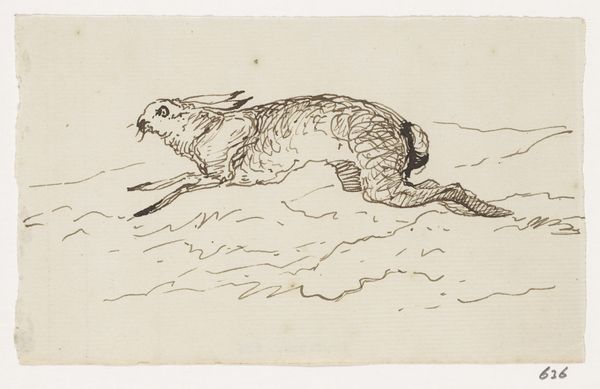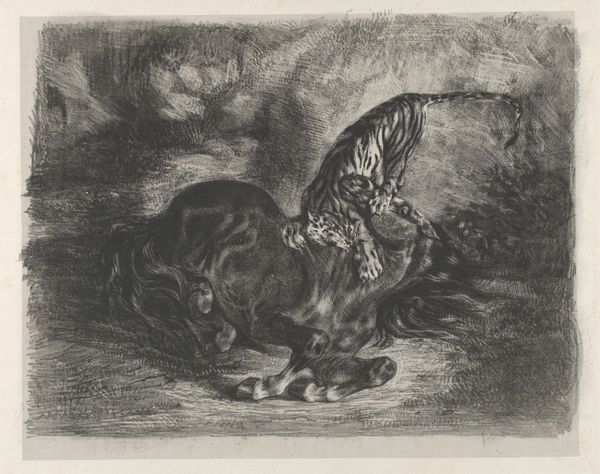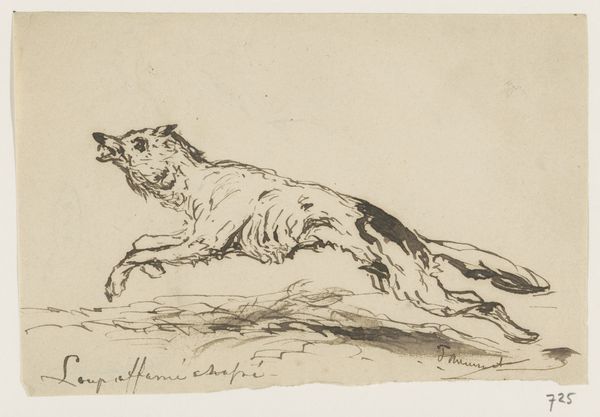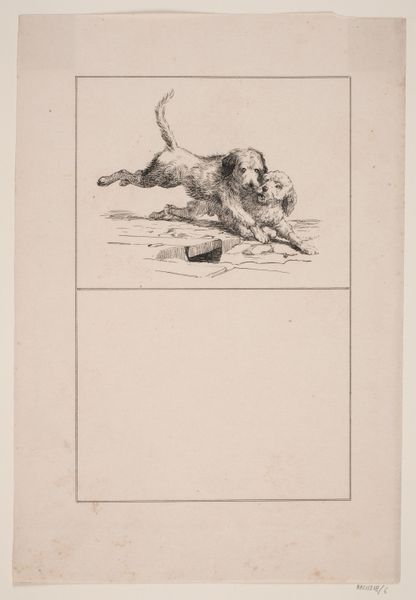
drawing, print, etching, paper
#
drawing
#
animal
# print
#
etching
#
landscape
#
paper
#
history-painting
#
realism
Dimensions: 75 × 124 mm (image); 92 × 137 mm (plate); 139 × 181 mm (sheet)
Copyright: Public Domain
Curator: Here we have Eugène Delacroix’s “Tiger Resting in the Desert,” an etching and print dating to 1846. What strikes you about it? Editor: Initially, a melancholic stillness pervades the piece. The landscape feels barren and somewhat oppressive, amplifying the isolation of the resting tiger. Curator: Yes, Delacroix was deeply interested in exotic animal subjects. His animal studies, in particular, reveal both his acute observation skills and an allegorical interest. This particular image has the feel of both a study and a finished composition, as if the tiger is more a symbol of the natural world than a simple realistic rendering. Editor: Absolutely. This image can be understood as a reflection on colonial encounters and the orientalist fascination with the "exotic" lands and their creatures. Do you think this image represents the subjugation and exploitation inherent in those encounters? Curator: Potentially. Remember, in symbolical terms, the tiger can often signify raw power and untamed instincts. Consider the composition – the tiger isn't actively hunting or fiercely posturing; it’s resting, seemingly indifferent to its surroundings. The "desert" becomes an internal space, an arid psychological landscape more so than a geographical place. Editor: But can that internal landscape truly be separate from its historical and social context? It feels overly romantic to ignore that this image comes from a time when the Western world was actively reshaping the globe and often casting nature itself in the role of something that requires taming. This "resting" is only momentary, suggesting its wildness needs civilizing influence. Curator: The interplay between wildness and stillness—I believe it points toward Delacroix exploring tensions found within the human psyche. The tiger, acting as a potent symbol, invites this connection. Editor: Well, I agree about the psychological tension that can be seen within this. For me it is further heightened by our contemporary view of animals and climate change and makes this tiger feel isolated and on the verge of peril. Curator: I think there’s a lot of potent symbolism packed into this deceptively simple image. Thank you, your insights are valuable as always. Editor: It was good to look at this one today. So much for such a little etching to say!
Comments
No comments
Be the first to comment and join the conversation on the ultimate creative platform.
